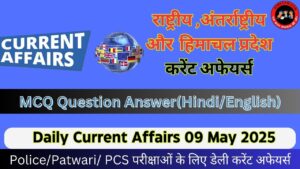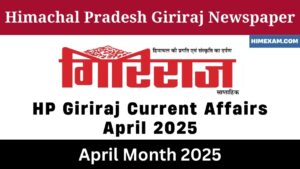Table of Contents
ToggleAncient Janapadas in Himachal Pradesh
||Ancient Janapadas in Himachal Pradesh||Ancient Janapadas in HP||
The Audumbaras: The tribal republic of H.P. were Sangha Janapadas, they were also called “Ayudhajivi sanghas” meaning those who lived by the profession of arms.
- According to Mahabharata Audumbaras were the descendants of the sage “Vishwamitra” who was founder of “Kaushika group”.
- Their coins have been mostly found in the Pathankot, Jawalamukhi and Hoshiarpur.
- A Buddhist scholar Chandragomin in 5th century AD refers to the Audumbaras in his book “Vriti” as a section of ‘Shalvas’.
- Panini, a great Sanskrit scholar has mentioned about Audumbaras, along with the people of Jallandhara is his Ganpatha.
- The Audumbaras were advantageously situated on the great route of commerce which ran from Takshila to the Gangetic valley, and it was route from Magadha to Kashmir.
- Pathankot was the junction of commercial route from Kangra, Nurpur and Chamba.
- Number of coins of the tribe has been found in Pathankot which shows that Pathankot was junction of commercial route.
- Their coins inscribed in Brahmi and Kharoshthi.
- Their coins have an additional word “Mahadeva along with Raja of the tribe.” Coins also show figure of bull (Nandi) the vehicle of Shiva and Trishul.
- Coins were made up of copper and silver.
- Use of Trident figure, a symbol of Shiva on their coins indicates their Shaivite faith.
- The tribe Audumbaras had republican system with an elected king.
- Sheep rearing was one of the occupations of people.
||Ancient Janapadas in Himachal Pradesh||Ancient Janapadas in HP||
TRIGARTA:
- It was founded around 8th-9th century BC by Susharma Chandra who helped the Kauravas in Mahabharata war, where he attacked Virata king of Matasya.
- Original seat of Susharma Chandra was said to be at Multan. He built the fort Nagarkot (Kangra).
- Trigarta and Jallandhara were used interchangeably for whole region. Trigarta was name for hilly areas and Jallandhara for plain.
- This region was drained by three rivers i.e. Ravi, Beas and Satluj.
- Trigarta is the oldest princely state in Himachal Pradesh.
- The first historical mention of Trigarta was founded in the writing of Sanskrit scholar Panini. He called it a conferderation of six states known as “Trigarta-Shashthas”.
- People of Trigarta were called by Panini as “Ayudhajivi” (those who earn by means of war.)
- Their coins inscribed in Brahmi and Kharoshthi and the coins were square in shape.
- The Kashika mentions the Trigarta was constituted by six members to form a confederation, which are following:
1. Kundoparatha
2. Kraushakti
3. Dandaki
4. Janaki
5. Jalmani
6. Brahmagupta
||Ancient Janapadas in Himachal Pradesh||Ancient Janapadas in HP||
Kuluta:
- Vishakha Dutt, the writer of Mudrarakshasa mentioned Kuluta as alliance with Himalayan state. Kuluta was founded by Bihangmani Pal.
- Coins found in valley bearing the name of “Virayasasyraja” around 100 AD Virayas means king. The coins were made up of copper.
- Coins were inscribed in Sanskrit and reverse of coins in Prakrit and Kharoshthi.
- Its ancient capital was “Jagatsukh” known as Nast and other capital was “Naggar” on the river Beas.
||Ancient Janapadas in Himachal Pradesh||Ancient Janapadas in HP||
THE KUNINDAS:
- Mahabharata mentions that the Kunindas people were conquered by Arjuna.
- They were mountaineers and neighbour of the Trigarta, and they lived between river Beas, Satluj and the Yamuna i.e. Sirmaur, Shimla hills and Kullu.
- Varahimir mentions them as a people of Kulutas and Sirhind.
- In modern period, we can identify Kunindas with the Kanets.
- They used plain as rearing ground for their cattle.
- They issued silver and copper coins, the silver coin had the Prakrit script in obverse and Kharoshthi in the reverse and copper coin inscribed mainly in Brahami script. The coins of Kunindas have also been found in the territory between Ambala and Saharanpur hills.
- Their coins bear “Rajnah Kunindasya Amoghabhutisya” which shows that all the members of the tribal assembly were called rajas and head or chief of the house was called Maharaja. Gaurav
- The other coins bearing in the title “Amoghabhuti” which is not a person but official title.
- Kunindas lost their independence with the entry of Shakas during 3rd century AD and reappeared only with the decline of Kushana Empire as they joined hands with Yaudheyas to get Kushana out for eastern Punjab.
||Ancient Janapadas in Himachal Pradesh||Ancient Janapadas in HP||

.png)







